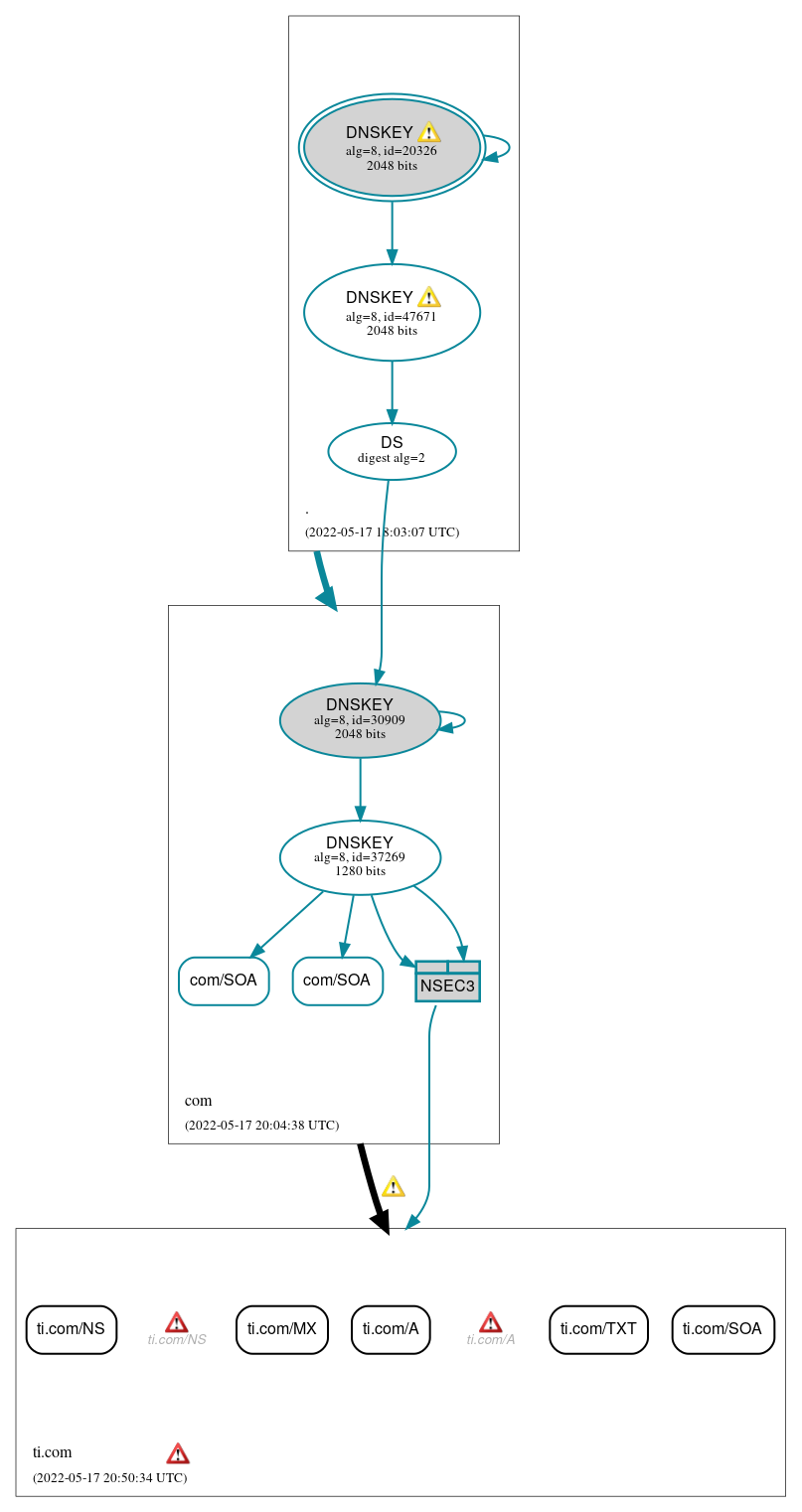ti.com
Updated:
2022-05-17 20:50:34 UTC (922 days ago)
Go to most recent »
Notices
DNSSEC Authentication Chain
 RRset status
RRset status
Insecure (5)
- ti.com/A
- ti.com/MX
- ti.com/NS
- ti.com/SOA
- ti.com/TXT
Secure (2)
- com/SOA
- com/SOA
 DNSKEY/DS/NSEC status
DNSKEY/DS/NSEC status
Secure (6)
- ./DNSKEY (alg 8, id 20326)
- ./DNSKEY (alg 8, id 47671)
- NSEC3 proving non-existence of ti.com/DS
- com/DNSKEY (alg 8, id 30909)
- com/DNSKEY (alg 8, id 37269)
- com/DS (alg 8, id 30909)
 Delegation status
Delegation status
Insecure (1)
- com to ti.com
Secure (1)
- . to com
 Notices
Notices
Errors (3)
- ti.com zone: The server(s) were not responsive to queries over UDP. See RFC 1035, Sec. 4.2. (192.163.14.193)
- ti.com/A: No response was received from the server over UDP (tried 12 times). See RFC 1035, Sec. 4.2. (192.163.14.193, UDP_-_NOEDNS_)
- ti.com/NS: No response was received from the server over UDP (tried 12 times). See RFC 1035, Sec. 4.2. (192.163.14.193, UDP_-_NOEDNS_)
Warnings (3)
- ./DNSKEY (alg 8, id 20326): No response was received until the UDP payload size was decreased, indicating that the server might be attempting to send a payload that exceeds the path maximum transmission unit (PMTU) size. See RFC 6891, Sec. 6.2.6. (192.112.36.4, UDP_-_EDNS0_4096_D_KN)
- ./DNSKEY (alg 8, id 47671): No response was received until the UDP payload size was decreased, indicating that the server might be attempting to send a payload that exceeds the path maximum transmission unit (PMTU) size. See RFC 6891, Sec. 6.2.6. (192.112.36.4, UDP_-_EDNS0_4096_D_KN)
- com to ti.com: The following NS name(s) were found in the authoritative NS RRset, but not in the delegation NS RRset (i.e., in the com zone): nsus.ti.com See RFC 1034, Sec. 4.2.2.





 JavaScript is required to make the graph below interactive.
JavaScript is required to make the graph below interactive.



